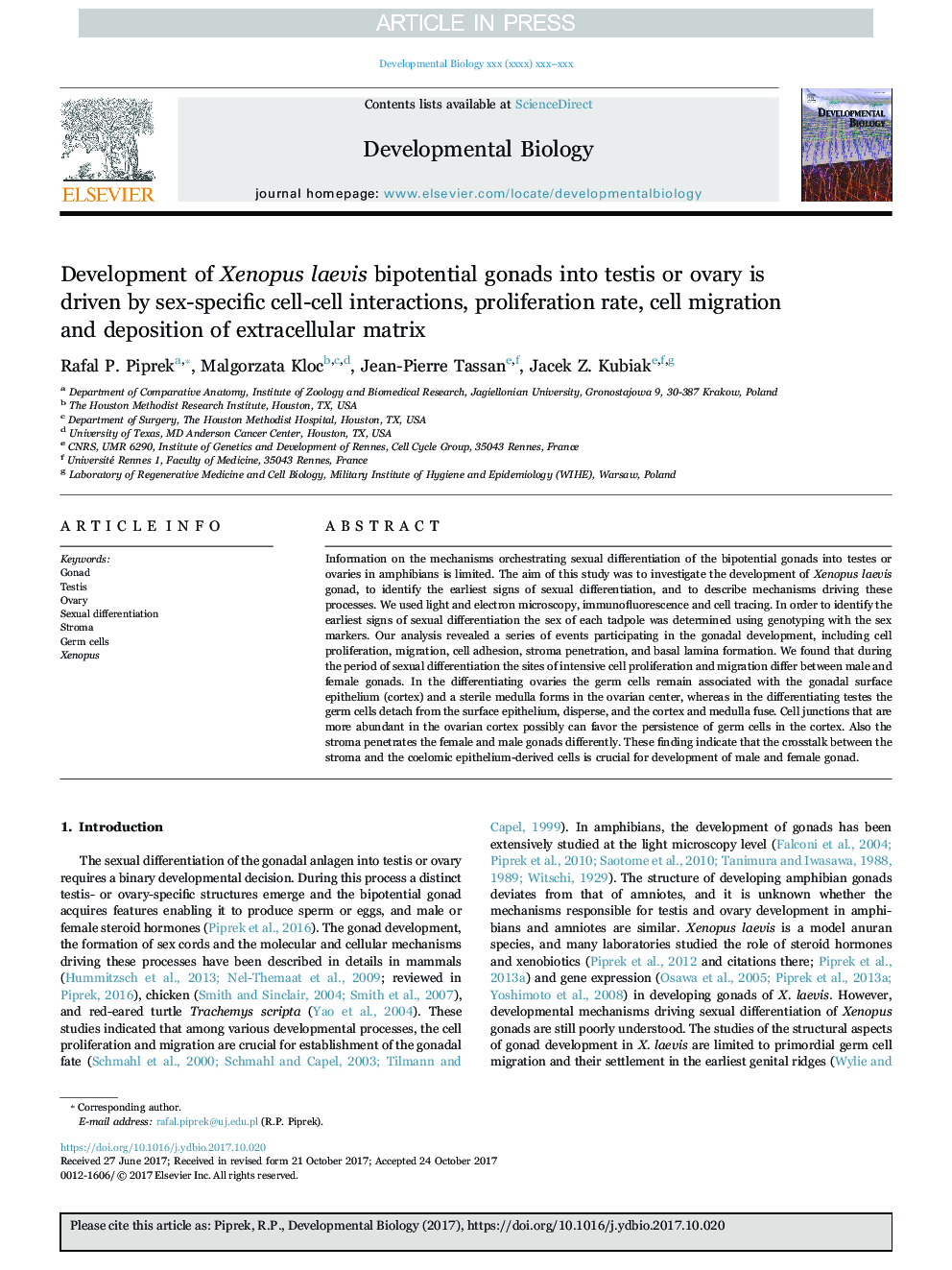| Article ID | Journal | Published Year | Pages | File Type |
|---|---|---|---|---|
| 8467747 | Developmental Biology | 2017 | 13 Pages |
Abstract
Information on the mechanisms orchestrating sexual differentiation of the bipotential gonads into testes or ovaries in amphibians is limited. The aim of this study was to investigate the development of Xenopus laevis gonad, to identify the earliest signs of sexual differentiation, and to describe mechanisms driving these processes. We used light and electron microscopy, immunofluorescence and cell tracing. In order to identify the earliest signs of sexual differentiation the sex of each tadpole was determined using genotyping with the sex markers. Our analysis revealed a series of events participating in the gonadal development, including cell proliferation, migration, cell adhesion, stroma penetration, and basal lamina formation. We found that during the period of sexual differentiation the sites of intensive cell proliferation and migration differ between male and female gonads. In the differentiating ovaries the germ cells remain associated with the gonadal surface epithelium (cortex) and a sterile medulla forms in the ovarian center, whereas in the differentiating testes the germ cells detach from the surface epithelium, disperse, and the cortex and medulla fuse. Cell junctions that are more abundant in the ovarian cortex possibly can favor the persistence of germ cells in the cortex. Also the stroma penetrates the female and male gonads differently. These finding indicate that the crosstalk between the stroma and the coelomic epithelium-derived cells is crucial for development of male and female gonad.
Related Topics
Life Sciences
Biochemistry, Genetics and Molecular Biology
Cell Biology
Authors
Rafal P. Piprek, Malgorzata Kloc, Jean-Pierre Tassan, Jacek Z. Kubiak,
